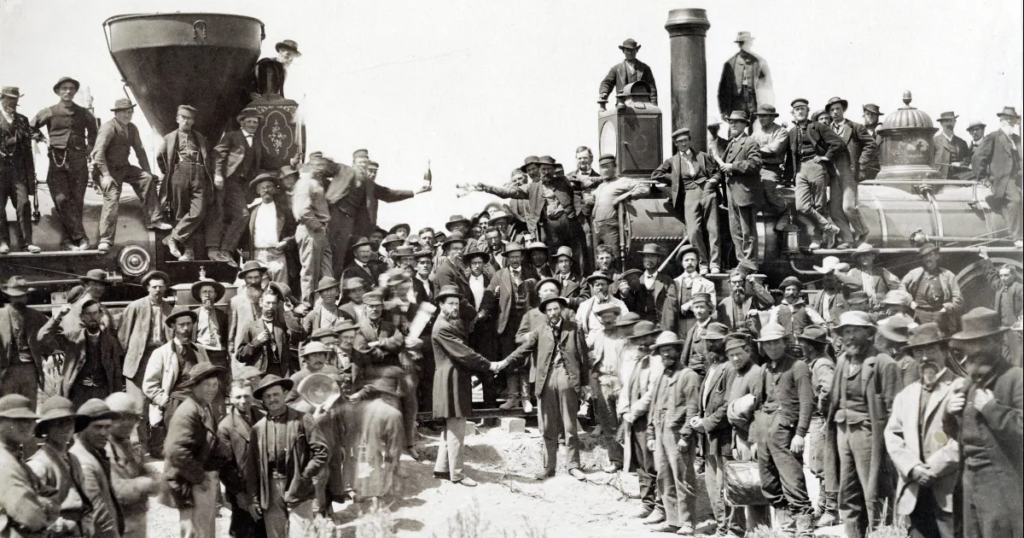
Photo by American Battlefield Trust
The first transcontinental railroad in the United States was a 1,911-mile railway line completed in 1869 that connected the existing eastern U.S. rail network at Council Bluffs, Iowa, with the Pacific coast at Oakland Long Wharf on San Francisco Bay. It significantly reduced travel time from months to just a few days, connecting the Atlantic and Pacific coasts and facilitating westward expansion and economic growth.
Transcontinental Railroad Explained
- Construction: The railroad was built by the Central Pacific Railroad (from the west) and the Union Pacific Railroad (from the east).
- Completion: The two lines met at Promontory Summit, Utah, on May 10, 1869, where the last spike was driven.
- Impact: The transcontinental railroad had a profound impact on the United States, including:
- Reduced travel time: Travel time across the country was reduced from months to days.
- Economic growth: It facilitated trade, opened up new markets, and stimulated economic development in the West.
- Westward expansion: It made it easier for people to move west, leading to increased settlement and development of the region.
- Conflicts with Native Americans: The increased westward migration also led to greater conflict with Native American tribes.
- Standard time zones: The need for standardized timekeeping for train schedules led to the adoption of standard time zones in 1883.
This video explains the construction of the first transcontinental railroad:
Sacramento, California, to Omaha, Nebraska